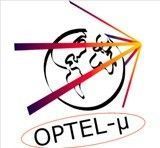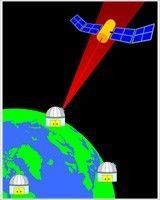
-
StatusOngoing
-
Status date2014-02-27
The general idea of the OPTEL‑µ product is to establish a robust direct detection lasercom system for space-to-ground communications from low earth orbit. OPTEL‑µ aims at developing a high performance, micro sized optical terminal for small/micro-satellites. The OPTEL‑µ miniature laser terminal provides access to optical frequencies for communications at minimised on-board resources. This will enable small/micro-satellites to provide downlink capabilities similar to larger platforms, but equally in line with their limited resources.
The project TESLA targets the development of an OPTEL‑µ Engineering Model of the space terminal and of a prototype of the ground terminal. The main parameters were established together with ESA in the preceding START study. The TESLA EM hardware of the space terminal implements the full functionality and performance but has minor deviations to the flight design with respect to form and fit. The main goal is to demonstrate the entire system and to test the required performances.
Consequently in the TESLA ARTES 5.2 activity the following equipment shall be developed:
- OPTEL‑µ EM: Engineering model of a small optical terminal,
- Ground terminal prototype.
- Reduced resource requirements: The OPTEL µ is targeting to meet 4.5 kg, 4.5 litres and 45 W goals in respect to the required resources.
- High data rate performance: Targeting up to 1 Gbps downlink rate per optical channel.
- Direct optical downlink through the atmosphere.
Primes and satellite operators are looking for innovative solutions to allow high data rate downloads without violating the resource constraints on micro-satellites. This opens a new market for optical communications solutions, focusing on providing higher data rates with lower or comparable on-board resource requirements compared to RF solutions.
OPTEL‑µ closes the gap on the market between RF and existing lasercom products and directly addresses new demands. Next to smallness, robustness and versatility, the main distinction to existing products are mission scenarios showing relaxed requirements with respect to timeliness, but emphasize the need for high downlink rates and volume at minimised cost.
OPTEL‑µ is positioned as a communications solution for small and micro LEO satellites for the following use cases:
- Burst Download of Remote Sensing Data,
- OPTEL‑µ is used in addition to traditional RF transmitters,
- Mission Data Download.
The OPTEL‑µ system consists of two elements, a space segment terminal referred to as "OPTEL‑µ space terminal" and a ground terminal referred to as "Optical Ground Station". Both together provide the capability of high-speed one-directional data links from low Earth orbit directly to ground at optical frequencies. Link interruption by clouds is avoided by a world-wide network of low cost optical ground stations located at sites with favourable weather conditions. This optical ground station network is also part of the OPTEL‑µ system.
The OPTEL‑µ space terminal development focuses on minimized mass, power consumption and very small volume, thereby providing the capability of high-speed optical downlinks also to micro-satellites that only can provide low mass and power margins. In accordance to our current estimate a two channel OPTEL‑µ transmitter will have a form factor of approximately 4.5 kg, 4.5 litres and 45 W.
The space terminal features a modular design of 3 main units, Optical Head Unit, Laser Unit and Electronics Unit. This allows for flexibility in respect to accommodation, e.g. placing the different modules at different locations in the spacecraft.
The TESLA project consists of the phases B1 and B2. Phase B1 lasts 12 months and finishes with the BDR focuses on breadboard activities to mitigate technical risks and will confirm the design concept. A channel characterization test at the end of phase B1 will allow a critical assessment of the system performance of the selected concept. Also in this phase the ground terminal prototype will be developed and utilized for the channel characterization test.
Phase B2, lasting 16 months, will then focus on the EM design of the space terminal and the final system test.
The project TESLA is in Phase B1. The System Requirements Review was successfully held in November 2011. Currently the preliminary design of the Space Terminal is being performed and breadboard manufacturing as well as breadboard tests of critical components and assemblies are on-going. The ground terminal prototype has been designed and manufactured and the channel parameterisation test is being prepared to be performed in spring 2012. The Baseline Design Review for OPTEL‑µ is planned for April 2012.







